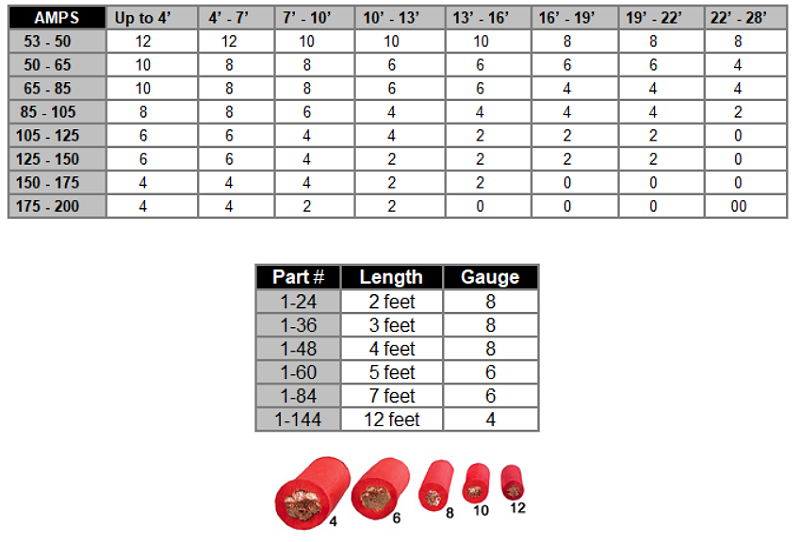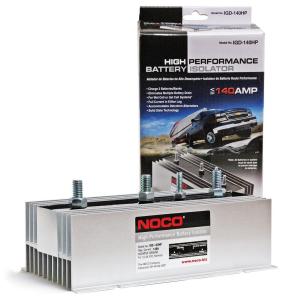Whenever you add accessories such as a winch, off road lights, or a high power stereo, it puts a strain on the trucks charging system. Many people adding a higher output alternator, but there are times when a dual battery setup is needed.
Painless Performance:
The Ranger Station uses a Painless dual battery current control system in both of its Rangers. The system includes a solenoid, switch, pre-terminated wire/connectors, fuse holder, fuse and mounting hardware.
Click HERE to view the instructions for this kit.
Powermaster:
Powermaster offers these isolators for dual batteries. These isolators Isolates the auxiliary battery from the starting battery to assure extra loads will not drain the starting battery. Distributes battery charge on demand.

Click HERE to view the instructions for this kit.
These Powermaster battery isolators are designed to separate the auxiliary battery from the starting battery, to ensure that extra loads will not drain the starting battery. They feature blue anodized aluminum heat sinks for maximum heat dissipation. The battery isolators are available in a 3 or 4-post design, and will work on alternators with up to 200 amp outputs.
The connection between the alternator and the battery is very important. An undersized charge wire or improperly attached terminals could result in voltage loss. Powermaster offers charge wires in various lengths.
 Powermaster uses fine stranded, highly flexible neoprene cable for the 4, 6, and 8 AWG charge wires.
Powermaster uses fine stranded, highly flexible neoprene cable for the 4, 6, and 8 AWG charge wires.NOCO High Performance Battery Isolator
The NOCO IGD140HP 140 Amp High-Performance Battery Isolator is a solid-state electrical device that eliminates multiple battery drain, prolongs battery life, and is more reliable than mechanical or solenoid systems. It’s ideal for recreational vehicles, boats, cars, utility vehicles, trucks and other battery applications, and it’s suitable for use with Wet, Gel, MF and AGM batteries. All needed hardware included.
Battery Isolator Features
Solid-State Technology–Isolates each battery bank and allows each battery to be charged and discharged
Eliminates Multiple Battery Drain–Stops battery banks from robbing power from each other
Durable–More reliable than mechanical or solenoid systems
Multiple Battery Chemistries–Suitable for Wet, Gel, MF and AGM batteries
Full Current Potential–Full current from either output
Universal Design–Works with most alternators, including Delcotron Series
Why Use a Battery Isolator?
Many vehicles have multiple batteries: one dedicated for starting the engine and the other to power accessories. Without a Battery Isolator, a battery with a lower charge will draw power from a battery with a higher charge, until the batteries equalize. This problem is known as multiple battery drain and could leave you with dead batteries.
A Battery Isolator will prevent current from flowing from one battery to the other and each battery will act as an independent power source. This will ensure that the battery you dedicated for starting never gets drained.
A Battery Isolator will also allow you to simultaneously charge both independent power sources at the same time. The amount of current which flows into each battery is then determined by the battery’s own state of charge (based on voltage regulator settings).

NOCO 140 Amp High-Performance Battery Isolator – Click For More Details & Reviews
NOCO 200 Amp High-Performance Battery Isolator – Click For More Details & Reviews
JayCorp – Dual Battery Kit with Voltage Sensitive Relay
The smart battery isolator allows two batteries to be charged at the same time. When the engine is started and the start battery reaches 13.4 volts, the relay engages, allowing two battery banks (start and accessory) to be charged simultaneously. When the voltage drops below 12.9 volts (eg the engine is stopped), the relay disengages, separating the batteries. This system eliminates the possibility of draining the start battery and protects sensitive electronic equipment powered with the accessory battery from harmful engine start up spikes.
Dual Battery Isolation Kit with 140A Smart Battery Isolator – Click for more info and reviews
Wiring the relay:
1. The black wire coiled inside the relay needs terminated to a good ground location using the included blue crimp connector. This wire is simply used as a ground for activating the relay.
2. The terminal on the relay marked “Positive Sense Batt” should be connected to the positive terminal of the primary starting battery using 4-6ga red wire. A crimp connector should be used to attach the wire to the relay side and another crimp connector will attach the cable to a battery terminal.
Handy Tip: The side of the relay casing has break away tabs for the wires to pass thru.
3. The second terminal on the relay is marked “Second Batt Positive” and should be connected to the positive side of the second battery using 4-6ga red wire in the same manner as above.
4. Black 4-6ga wire should be used to ground the second battery. Remember, your ground points are very important!
Make sure you are grounding to a good, clean, solid metal surface.






